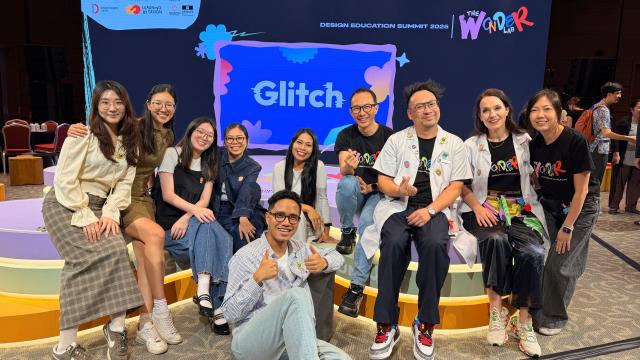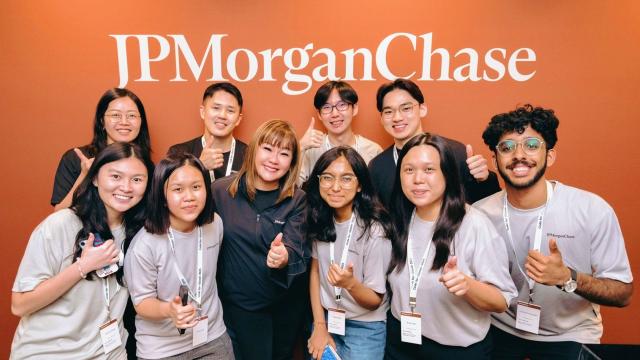The Centre for Immersification at SIT held its inaugural Immersions event on 21 October 2022, in conjunction with the 21st IEEE International Symposium on Mixed and Augmented Reality (ISMAR) 2022. The event brought together experts from industry and academia to exchange ideas and explore collaborations.
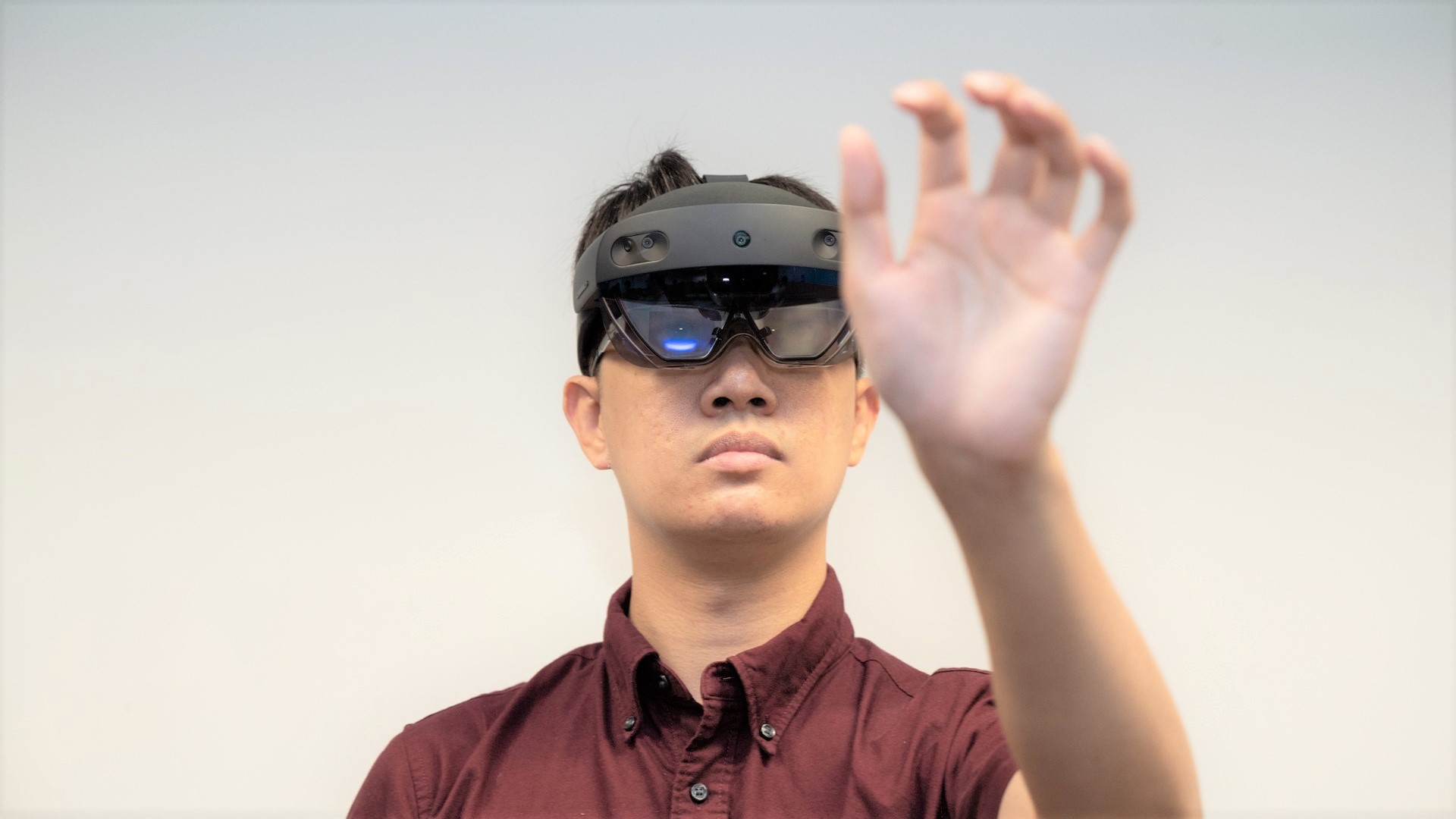
Benjamin Kwok, Research Engineer, SIT, demonstrating a Mixed Reality programme at the recent Immersions event by SIT’s Centre for Immersification. (SIT Photo: Keng Photography/Tan Eng Keng)
‘Immersification’ is not a word.
This may come as a surprise, given that what it refers to – namely, the design of immersive technologies that bring a new depth of experience to traditional digital media – is a phenomenon that has been catching the digital world by storm. But one researcher believes that as the technology becomes more mainstream, ‘immersification’ – like ‘gamification’ – may just be added into the dictionary in the future.
“‘Gamification’ was not a real word 10 or more years ago,” said Associate Professor Tan Chek Tien, Centre Director of the Centre for Immersification at the Singapore Institute of Technology (SIT). The term refers to the technique of inserting gameplay elements in non-gaming settings to boost user engagement.
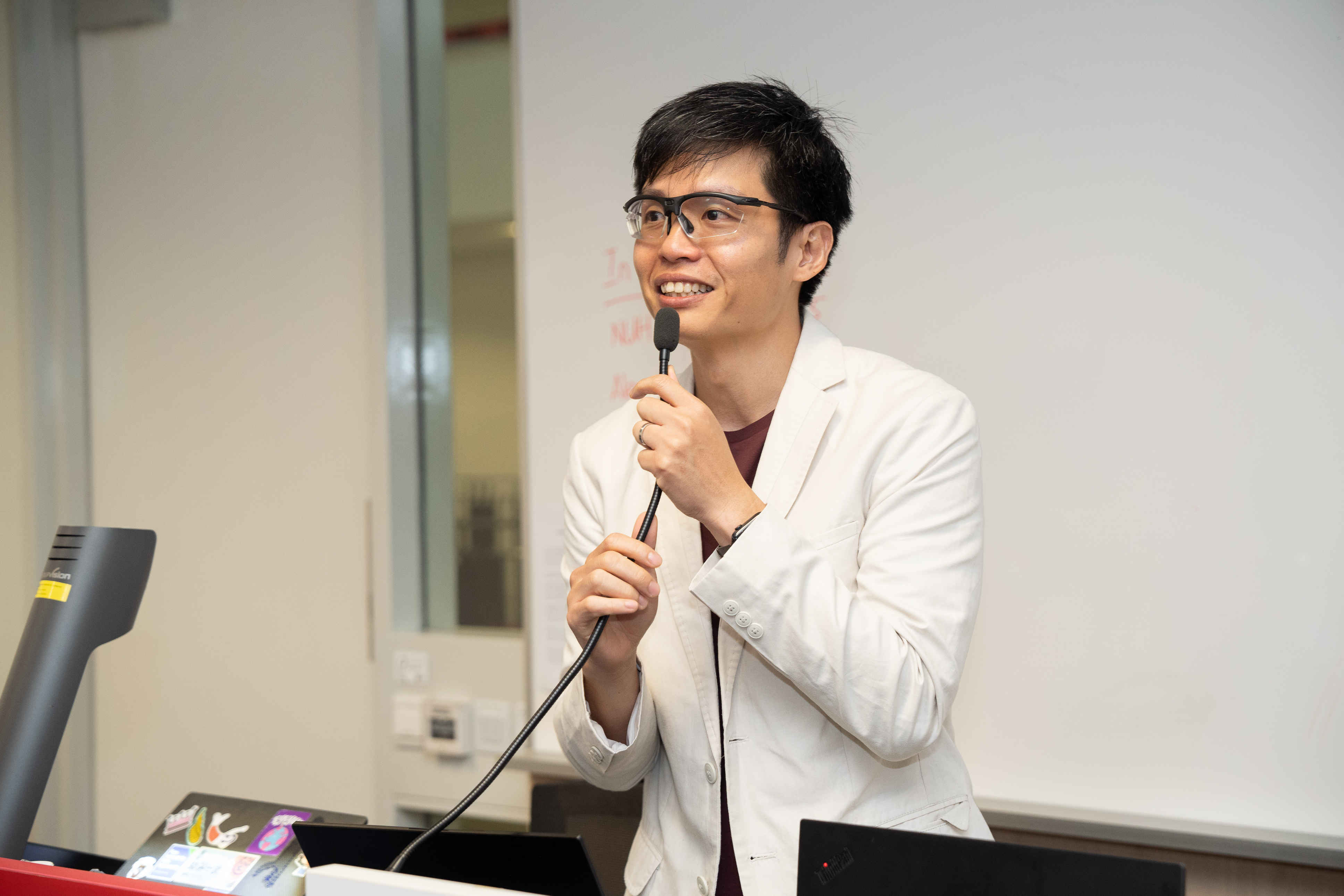
A/Prof Tan welcoming attendees of the centre’s inaugural industry knowledge exchange event. (SIT Photo: Keng Photography/Tan Eng Keng)
“But it got added to the Oxford Dictionary. My hope is that ‘immersification’ will also be added,” said A/Prof Tan.
Paving the way for ‘immersification’ to become mainstream was precisely the goal of the centre’s inaugural showcase and knowledge sharing event – hosted by the centre in conjunction with the 2022 International Symposium on Mixed and Augmented Reality (ISMAR) conference. Otherwise known as Immersions, the event hopes to bridge the gap between industry partners and academia to enable collaborations in the immersive technology space, said Associate Professor Jeannie Lee, Deputy Centre Director of the Centre for Immersification.
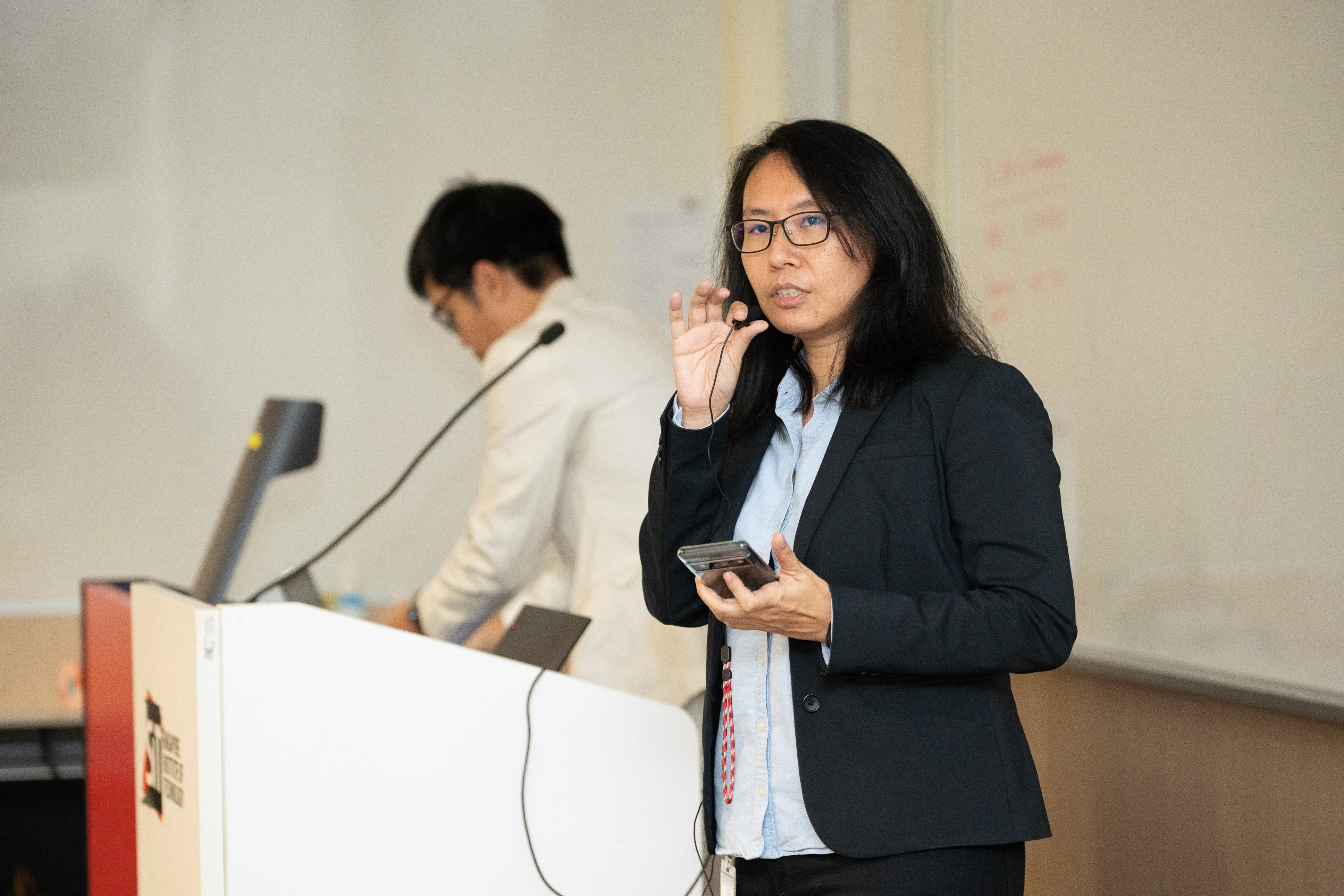
A/Prof Lee shared that the event will be the first of many to come. (SIT Photo: Keng Photography/Tan Eng Keng)
The main enabling technology of Immersification – also known as extended reality (XR) – may be the future. Still, as it becomes more widespread and popular, obstacles for consumers, businesses and the technology itself must be overcome.
Overcoming High Barriers to Entry
Even as more consumers set up camp in virtual reality, barriers of entry remain for businesses, said Ms Joanne Teh, Assistant Director of the Infocomm Media Development Authority’s (IMDA) incubation and innovation space PIXEL. These include high equipment costs and challenging returns on investments and business models.
“The Metaverse is still evolving, with many tech areas yet to be unpacked,” noted Ms Teh. “[But] what’s clear is that both global economics and the market will be driven by underlying technology in AR/VR (augmented and virtual reality) and digital models.”
Ms Teh taking the audience through the state of the burgeoning metaverse landscape. (SIT Photo: Keng Photography/Tan Eng Keng)
Given the huge potential of immersive technology, government outfits like IMDA’s PIXEL are promoting a robust ecosystem that connects players, from start-ups to corporates. Such connections will enable companies to simplify innovation and tap into the boundless opportunities available in the Metaverse.
To that end, PIXEL offers 28,000 square feet of innovation space to companies where they can access industry-best facilities and equipment. Consultation and networking opportunities are also available.
“Short of a full-on Metaverse world, the AR/VR tech will cut across work, play and commerce to deliver ‘phygital’ experiences,” Ms Teh said.
Fostering widespread adoption of XR tech will be key to being part of this change.
Adapting XR to Consumer Environments
Before the boom of AR applications and VR headsets, XR tech was largely confined to research spaces or niche industries.
But usage of the new technology has grown, and with it, the virtual and physical spaces in which XR tech is deployed.
Dr Daniel Medeiros, Research Associate at Glasgow Interactive Systems, University of Glasgow, noted that as XR gravitates into people’s homes and public spaces, the technology has to be adapted to different environments.
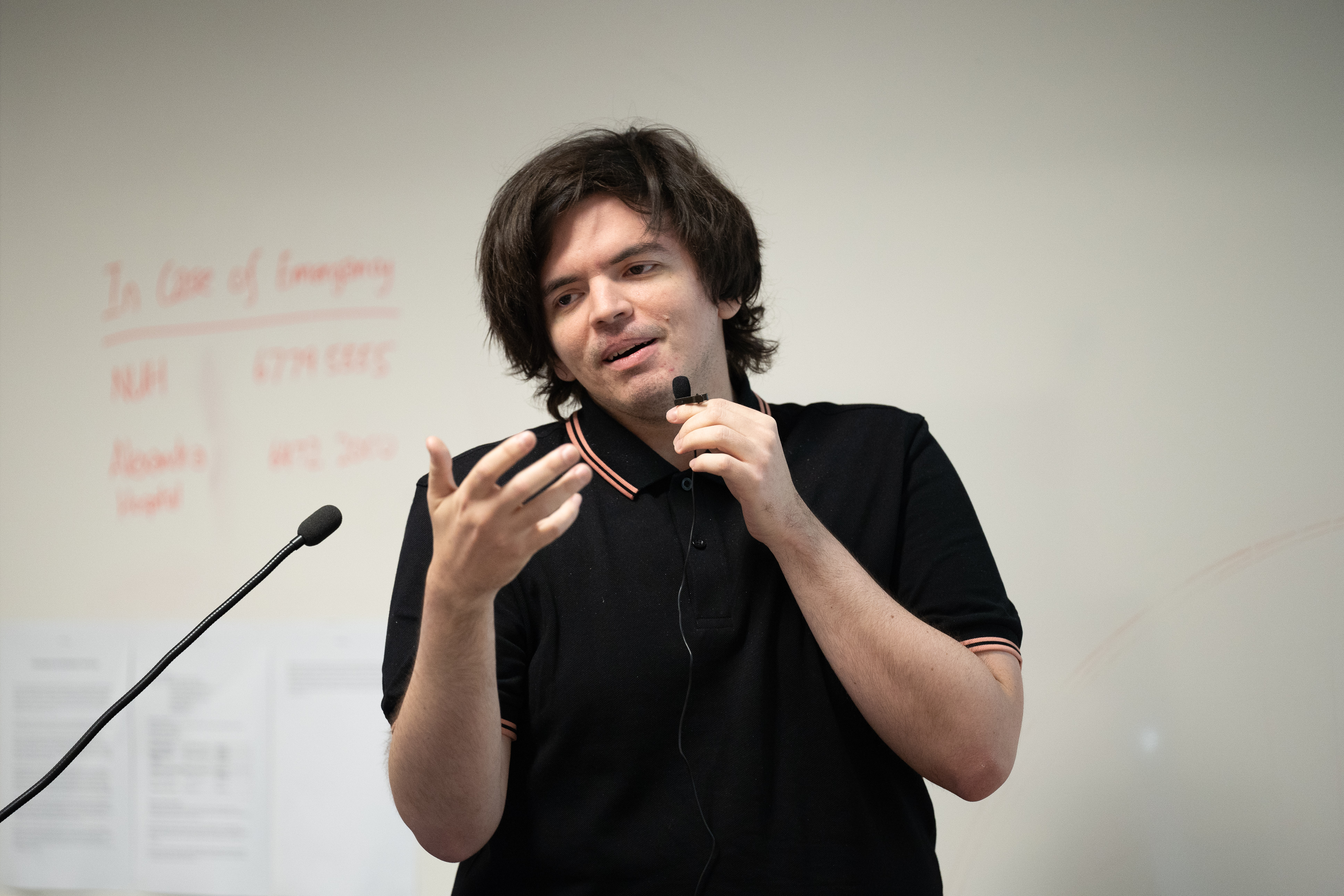
Dr Medeiros’ discussion addressed issues that come with immersive technology, such as motion sickness. (SIT Photo: Keng Photography/Tan Eng Keng)
In cars, for example, XR needs to overcome issues such as motion sickness and precision. Opportunities for user interaction with various haptic surfaces, such as plane seatbacks, should also not be wasted.
As the technology improves and proliferates, Dr Medeiros cautioned that the social impact of XR requires attention.
Connecting the physical and virtual world with XR should not come at the expense of human-to-human interaction. Instead, XR should enhance the experience of communication and collaboration, for example by allowing individuals in remote locations to ‘meet’ in the same ‘phygital’ location.
XR should also remain respectful of social mores in the real world, such as the concept of personal space, he added.
Real World Applications
XR tech may be in its nascent stages, but some companies are already rolling it out in real-world settings – among them MediVR, a deep-tech start-up specialising in creating virtual patients for medical simulation.
Such simulations are run as part of training programmes for medical students and staff, helping to ease the burden on limited resources.
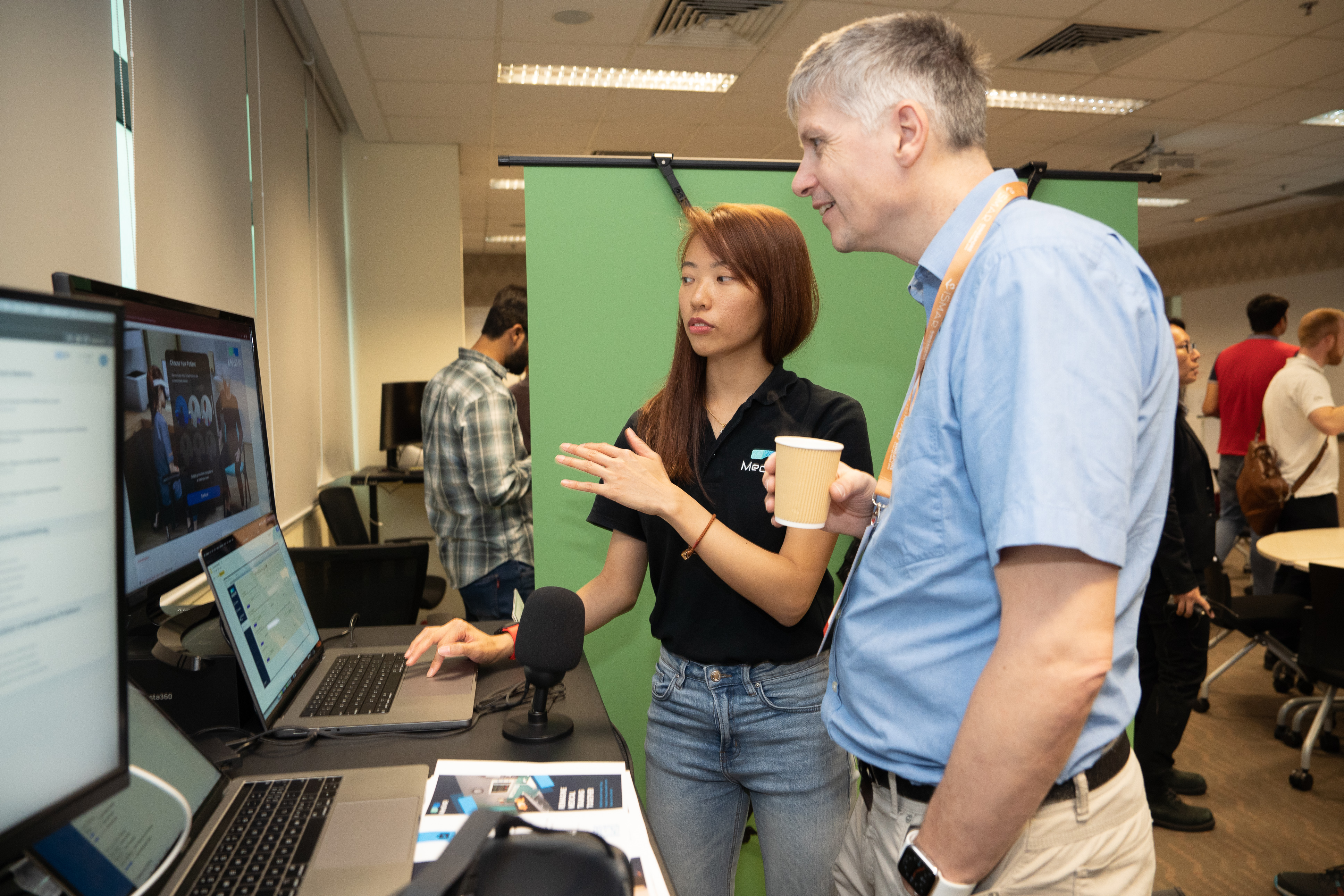
Ms Anthea Foong (left) demonstrating some of MediVR deep-tech offerings at the event. (SIT Photo: Keng Photography/Tan Eng Keng)
This is far from a one-size-fits-all approach. Ms Anthea Foong, Chief Executive Officer and Co-Founder of MediVR, said her firm creates realistic and localised learning experiences through conversational artificial intelligence that simulates real patients.
This allows medical students to improve the accuracy of their diagnosis skills and hone bedside manners, she said.
Taking a more ‘sandbox’ approach to XR tech is Dr Quah Chee Kwang, who is part of a team – led by Dr Budianto Tandianus – that is building SIT’s virtual campus.
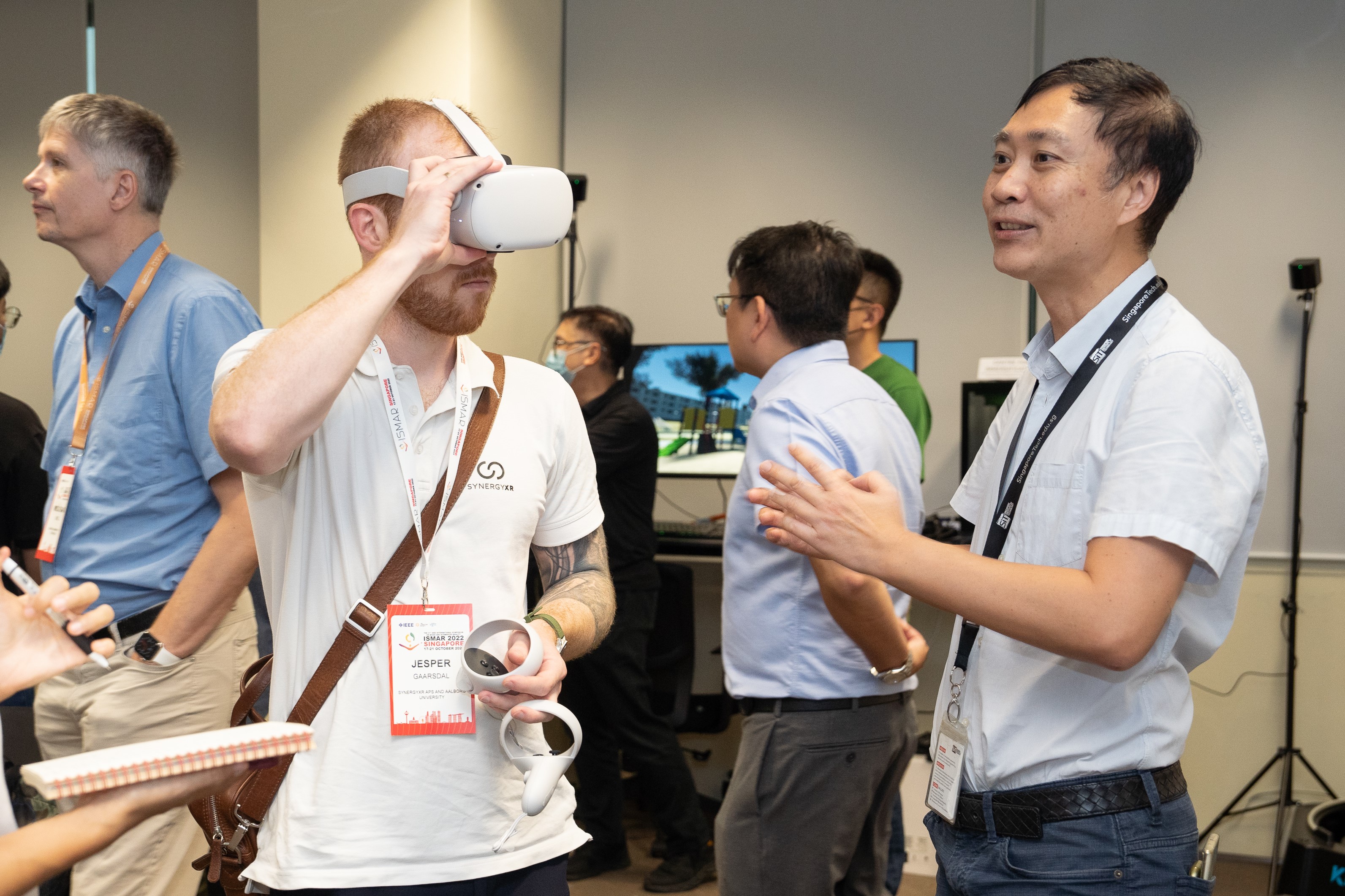
Dr Quah (right) demonstrating a preview of SIT’s upcoming virtual campus at the event. (SIT Photo: Keng Photography/Tan Eng Keng)
Spearheaded by SIT’s Centre for Digital Enablement (CoDE) and supported by the Centre for Immersification, the virtual campus is a digital twin of the university’s upcoming Punggol campus in virtual reality. Its chief use will be as a testbed for different technologies, from 3D reconstruction to computer graphics.
Having such a space to test technologies will help to encourage new research interests, as well as improve software reusability to save researchers time and effort. The virtual campus, said Dr Quah, will always be a work in progress.
“It will never be completed,” Dr Quah said. “It’s a living lab that will always be in a state of transformation.”















![[FA] SIT One SITizen Alumni Initiative_Web banner_1244px x 688px.jpg](/sites/default/files/2024-12/%5BFA%5D%20%20SIT%20One%20SITizen%20Alumni%20Initiative_Web%20banner_1244px%20x%20688px.jpg)

